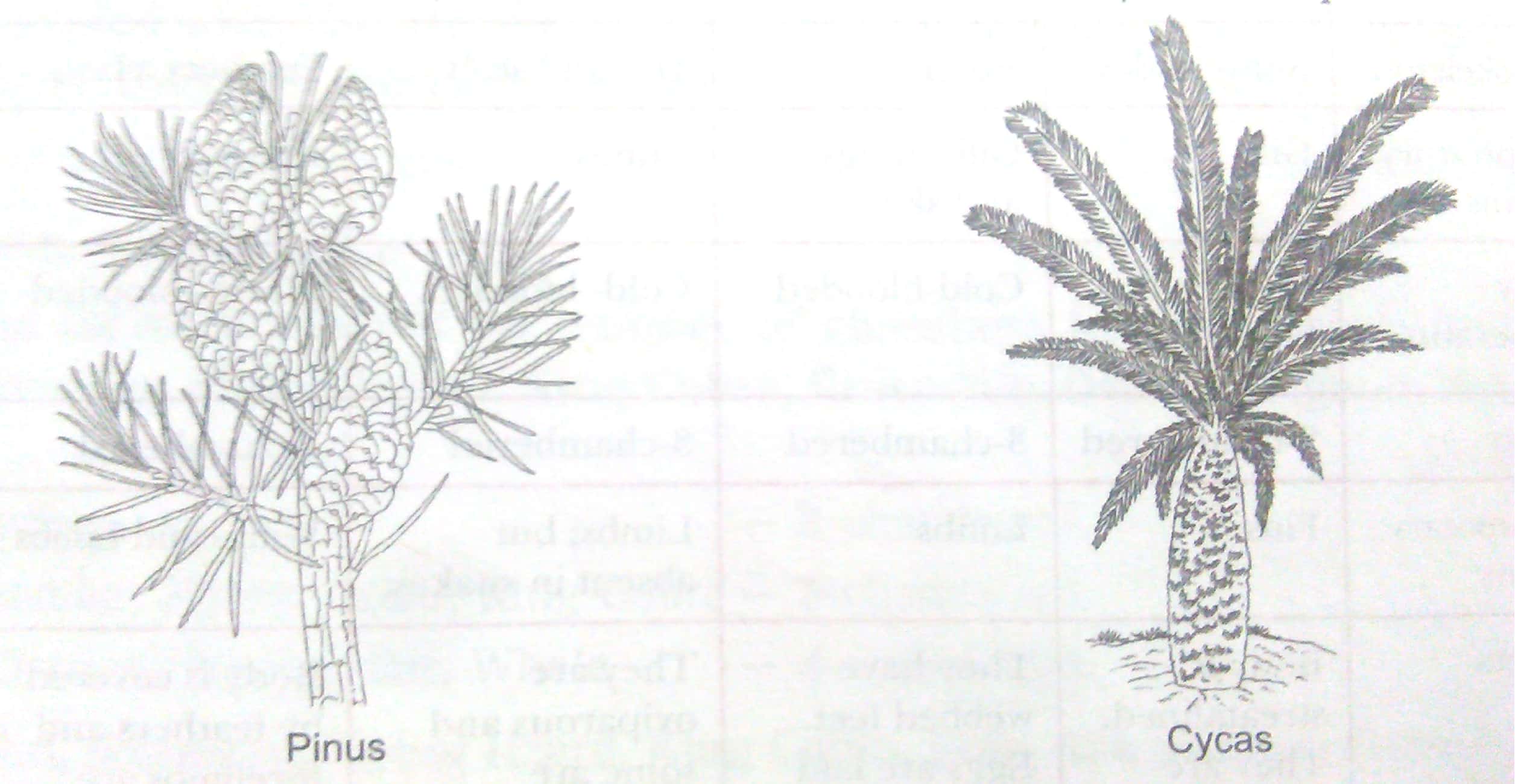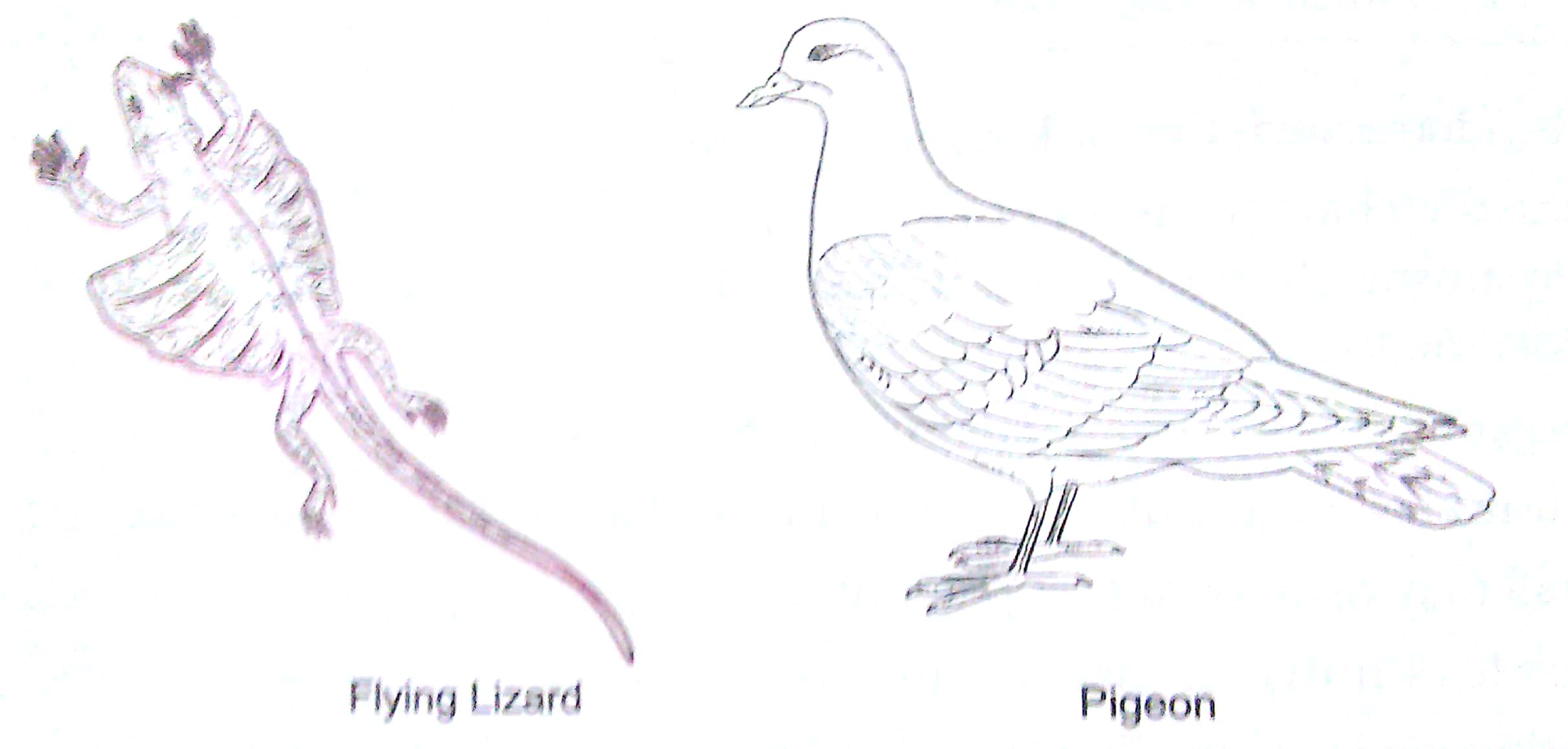Long Answer Questions - 5 Marks
Q1. Describe the three main characteristics that are used for a hierarchical classification.
Ans. The three main characteristics used for a hierarchical classification are:
(i) Complexity of cell structure, i.e., type of cell-prokaryotic or eukaryotic. As a eukaryotic cell has membrane-bound organelles including a nucleus, the cellular processes can be carried out efficiently in isolation from other cells. On the other hand, the organisms without a clearly demarcated nucleus and other organelles need to have very different biochemical pathways. This would naturally have a great effect on every aspect of cell design. Moreover, the nucleated cells would have the capacity to participate in making a multicellular organism as they are capable of taking up specialised functions.
(ii) Body organisation, i.e., whether the organism is unicellular or multicellular. In a eukaryotic multicellular organism, cells that group together to form a single organism use the principle of division of labour. In this type of body design, all cells would not be identical. Rather, groups of cells will carry out specialised functions. Thus, this makes a very basic distinction in the body designs of organisms. As a result, an amoeba will be very different in its body design from a fish.
(iii) Mode of nutrition: autotrophic or heterotrophic. Plants make their own food while animals depend on plants or other animals for their food. For this they will definitely have different body design.
Q2. Give the main features of the phylum Porifera.
Ans.
(i) They are primitive animals.
(ii) They are generally multicellular organisms with specialised cells but these cells do not group together to form tissues.
(iii) Most of them are marine, i.e., found in the seas. Some of them are also found in ponds and rivers.
(iv) They possess pores all over the body.
(v) Reproduction can be by both sexual and asexual methods.
(vi) Sensory system is absent.
(vii) Mouth and anus are absent.
(viii) A distinct canal system with inlets and outlets for water circulation inside the body is present. They obtain food and oxygen by means of water. The collar cells filter out food particles from the water current flowing through the canal system.
Examples are: Sycon, Spongilla and Euplectella.
Q3. Give the main features of coelenterates.
Ans.
(i) Diploblastic animals with tissue level organisation in the body.
(ii) The body is radially symmetrical.
(iii) The body bears tentacles supplied with special stinging cells called cnidoblasts.
(iv) There is a cavity in the body.
(v) Body is made of two layers of cells.
(vi) Simple gonads without gonoducts are present.
(vii) Reproduction is usually asexual (budding) in polyp form and sexual in medusae form.
(viii) They show polymorphism.
Examples: Hydra, Obelia and jelly fish.
Q4.
(i) List three characteristics which help us to distinguish amphibians from pisces.
(ii) Classify the following living organisms as cold-blooded and warm- blooded animals:
Shark, Lizard, Sparrow, Rohu.
Ans.
(i) Following characteristics distinguish amphibians from pisces:
1. Amphibians lack scales whereas skin of pisces are covered with scales.
2. Amphibians have mucous glands.
3. Amphibians have a three-chambered heart unlike pisces, their hearts have only two chambers.
(ii) Cold-blooded: Shark, Rohu, Lizard
Warm-blooded: Sparrow
Q.5. Describe the features of phylum Platyhelminthes.
Ans.
(i) They show bilateral body symmetry.
(ii) Their body is dorsoventrally flattened like a ribbon. So they are also called flatworms.
(iii) Most of them are parasitic, only a few are free living.
(iv) They are mostly hermaphrodites.
(v) There are three embryonic layers of cells in their body. So, they are triploblastic.
(vi) The body does not have any pore or cavity.
(vii) They have power of regeneration.
Examples: Fasciola (Liver fluke), and Taenia solium.
Q6. Write the important features of phylum Aschelminthes (Nematoda).
Ans.
(i) Most of them are small and cylindrical. So they are also called as round worms.
(ii) The body size ranges from microscopic to a few centimetres in length.
(iii) They all are mainly heterotrophic animals.
(iv) They are triploblastic.
(v) Body cavity has a true coelom.
(vi) Respiratory and circulatory systems are absent.
(vii) They have a complete alimentary canal.
(viii) Sexes are separate.
Examples: Ascaris (roundworm), Enterobius, and Wuchereria (filarial worm).
Q.7. Enlist the main features of phylum Annelida. Give examples.
Ans.
(i) Body of annelids are bilaterally symmetrical.
(ii) They are triploblastic.
(iii) Metameric segmentation is present.
(iv) Closed circulatory system with respiratory pigment dissolved in the plasma.
(v) Nephridia for excretion and osmoregulation are present.
(vi) These animals are found in a variety of habitats like fresh water, marine water as well as land.
Examples are: Nereis (sand worm or clam worm), Aphrodite (sea mouse), Pheretima (earthworm).
Q8. Give the important distinguishing features of Arthropoda.
Ans.
(i) These animals are bilaterally symmetrical and segmented.
(ii) Body is covered with chitinous exoskeleton.
(iii) One or two pairs of jointed legs are present.
(iv) The body cavity is blood-filled and is called haemocoel.
(v) Body bears jointed appendages, and is divided into head, thorax and abdomen.
(vi) Circulatory system is open, ie, blood doesn't flow in blood vessels.
Examples: Palaemon, cockroach and butterfly.
Q9. Give the main distinguishing features of phylum Mollusca.
Ans. Following are the main distinguishing features of phylum Mollusca:
(i) The animal shows bilateral symmetry.
(ii) They have soft bodies, so they are also called soft bodied animals.
(iii) Body is segmented and divided into head, foot and visceral mass.
(iv) A glandular fold, the mantle, is present over the body.
(v) There is a calcareous shell around the body in some molluscs.
(vi) They have open circulatory system.
(vii) Kidney-like organs for excretion are present.
Examples: Pila, Sepia, octopus.
Q10. What are vertebrates? What are their main features?
Ans. Vertebrates are the animals included in the phylum chordata in which the spinal chord is made of small vertebrae.
There are five classes of vertebrates:
(i) Pisces (ii) Amphibians (iii) Reptiles (iv) Aves and (v) Mammalia.
The main features of vertebrates are given as under:
(i) They possess a solid notochord.
(ii) The body has bilateral symmetry.
(iii) They have a true vertebral column.
(iv) They have a dorsal hollow nerve cord.
(v) They are triploblastic.
(vi) The terrestrial forms respire through lungs and the aquatic forms through gills.
(vii) They are coelomate.
Q11. Give the point of differences between non-chordates and chordates.
Ans.
|
Non-chordates |
Chordates |
|
1. Vertebral column is absent. 2 Central nervous system is solid and ventral. 3. If heart is present, it is dorsal. 4. Haemoglobin, if present is dissolved in plasma. 5. The anus is posterior, so no post-anal tail. |
1. Vertebral column is present 2. It is hollow and dorsal. 3. Heart is ventral. 4. Haemoglobin is present in the red blood corpuscles. 5. A post-anal tail is present. |
Q12. What are the characteristics of kingdom Monerai?
Ans. Following are the characteristics of kingdom Monera:
(i) The organisms do not possess a clearly defined nucleus, i.e., the nucleus is not enclosed by a nuclear membrane.
(ii) Cell organelles are also not covered with a membrane.
(iii) Organisms are unicellular, microscopic prokaryotes living in moist conditions.
(iv) Cell wall may or may not be present.
(v) The mode of nutrition may be autotrophic or heterotrophic.
(vi) Reproduction is primarily asexual by binary fission or budding.
Q. 13. Thallophyta, Bryophyta and Pteridophyta are called as 'Cryptogams'. Gymnosperms and Angiosperms are called as 'Phanerogams'. Discuss why. Draw one example of a gymnosperm.
Ans. The thallophyta, bryophyta and pteridophyta are called as 'cryptogams' because the reproductive organs of these groups are inconspicuous or hidden. Seeds are absent. On the other hand ‘Phanerogams' include gymnosperms and angiosperms which have well differentiated reproductive tissue and the embryo with stored food. Their embryo develops into seed.

Q 14. Give the salient features of class Pisces.
Ans. The main features of Pisces are:
(i) They are exclusively water living animals and include the fishes.
(ii) Their skin is covered with scales/plates.
(iii) They obtain oxygen dissolved in water by using gills.
(iv) Their body is streamlined, and a muscular tail is used for movement.
(v) They are cold-blooded and their hearts have only two chambers.
(vi) They lay eggs.
(vii) Some fish varieties have their skeletons made of both bone and cartilage, such as Anabas, Sea horse, Rohu, and some have their skeletons made entirely of bone, e.g., Torpedo fish and Sting ray (Trygon).
Q15. Differentiate between flying lizard and bird. Draw the diagram.
Ans. Flying lizard belongs to the group 'reptiles' and is characterised as cold blooded, body covered with scales and have three chambered heart. Whereas the birds belong to the group 'aves' and have characteristics of being warm blooded, having feather covered body, forelimbs modified as wings and four chambered heart.

Q16. Distinguish between the five classes of vertebrates on the basis of characters like habitat, kind of exoskeleton, respiratory organs and other distinct features.
Ans. Differences between Pisces, Amphibia, Reptilia, Aves and Mammals are as follows:
| Character | Pisces | Amphibia | Reptilia | Aves | Mammals |
| 1. Habitat | Aquatic | Terrestrial and aquatic | Terrestrial | Arboreal | Terrestrial aquatic and arboreal |
| 2. Exoskeleton | Slimy Scales | Absent | Dry and scaly | Feathers, claws | Hair, nails, etc. |
| 3. Respiratory organs | Gills | Gills, lungs and skin | Lungs | Lungs | Lungs |
| 4. Body temperature | Cold blooded | Cold-blooded | Cold-Blooded | Warm-Blooded | Warm-Blooded |
| 5. Heart | 2-chambered | 3-chambered | 3-chambered | 4-chambered | 4-chambered |
| 6. Locomotary organs | Fins | Limbs | Limbs; but absent in snakes. | Wings and Limbs | Limbs |
| 7. Others | Body is streamlined. They are oviparous. | They have webbed feet. Eggs are laid in water and larvae are aquatic. | They are oviparous and some are viviparous, eg., lizard and snake. Development is external. | Body is covered by feathers and forelimbs are modified into wings. Their bones are hollow. | Presence of mammary glands. There are hairs on the body and external pinna is They are viviparous. |
Q. 17. How are the phanerogams classified?
Ans. Phanerogams are classified depending on the presence or absence of fruits. They are of two types:
(i) Gymnosperm possesses naked seeds, i.e., not enclosed by fruits.
(ii) Angiosperms, in which the seeds are enclosed within the fruit.
Angiosperms are further divided into two types:
(i) Monocotyledons, which have a single cotyledon in their seeds, e.g., wheat, rice, etc.
(ii) Dicotyledons, which have two cotyledons in their seeds, e.g., gram, pea, etc.


